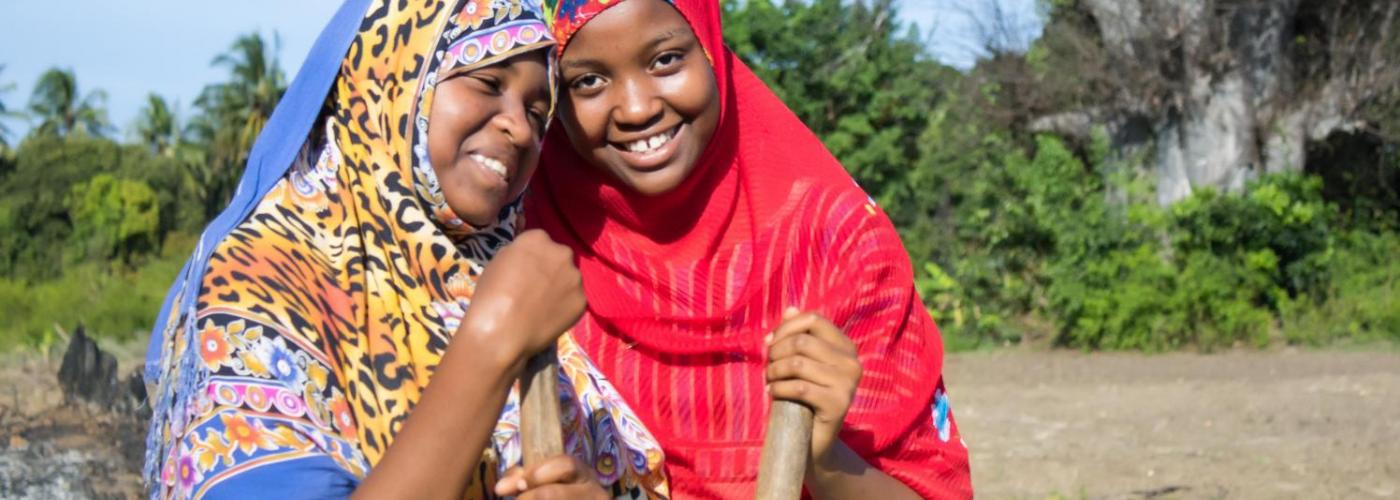Youth Inclusion in Market Systems
Image

This blog was originally posted on Agrilinks and was written by Morgan Mercer.
Market systems development (MSD) has become an increasingly popular approach to development because of its potential for sustainable development gains, co-funding with the private sector, and increased inclusion for marginalized groups. Yet youth — who make up a large portion of the potential workforce in developing countries — are often left out of markets systems, representing a significant lost opportunity to deliver social and economic benefits. With International Youth Day on August 12, we wondered: to what extent is market systems development living up to its potential for inclusion of male and female youth?
How well is MSD delivering on youth inclusion in practice?
Market systems are inclusive when they engage and benefit a range of actors including women, youth, and other marginalized groups who may often be excluded or exploited by traditional market systems. When market systems are inclusive, youth can access the opportunities, skills, and resources to upgrade their roles and engage profitably while also influencing these systems to benefit themselves, their communities, and their countries.
The Feed the Future Advancing Women’s Empowerment (AWE) program recently published a report and case studies exploring the practical ways that 15 USAID-funded and non-USAID funded MSD programs around the world are engaging and benefiting youth. Although relatively few youth-focused MSD programs were identified compared with those targeting women, and those targeting women generally did not address issues of young women explicitly, we were able to identify some interesting lessons.
What did we learn?
-
MSD can create transformative opportunities for youth, but it can take time and does not always satisfy the breadth of youth development needs. Some Activities made important progress in shifting social norms to increase opportunities and benefits for male and female youth. However, it was challenging to identify if these changes addressed the root causes of youth’s market exclusion. Most Activities could facilitate market-driven income and employment opportunities for youth, but many failed to include broader youth developmental needs (e.g., sexual and reproductive health, life skills), and only targeted older male youth.
-
Varying levels of intensity in market facilitation enable holistically meeting youth development needs. Facilitation — working through market actors to achieve change — is a fundamental principle in MSD, and while MSD aims for low-intensity, or light-touch, facilitation (e.g., youth agent models piloted by private input supplier companies) many Activities needed higher-intensity facilitation tactics (e.g., direct training of peer educators that cascade training to youth on business and life skills) to address specific youth barriers.
-
MSD can facilitate new and innovative opportunities in non-traditional sectors and roles for male and female youth. In Eastern Europe and Southeast Asia, incentivizing public-private collaboration between government and businesses to expand childcare services enables young women to fully participate in paid work and markets. In Uganda, when young women are trained as tractor operators in response to the country’s labor deficit, they defy local norms and change perceptions about gender roles, which can have far-reaching impacts on agricultural market systems.
-
Approaches tailored to young women’s inclusion in MSD are still limited, including private sector incentives to address unpaid care work, lack of access to land, and harmful attitudes and norms about women’s capabilities.
-
Age- and gender-focused market analysis is critical in identifying where incentives align between commercial interests and impacts for youth. Solid analysis can also surface constraints, opportunities, and aspirations of youth, and can reveal market actors’ attitudes and behaviors about youth. A youth employment program in Zambia noted that because they did not consider youth preferences in early sectoral analyses, they had to course correct midway through the program, shifting away from single-harvest main-crop commodities to input supply and aggregation services — a market opportunity that was more aligned with youths’ preferences for diversified farm enterprises and year-round income.
-
Private sector engagement is necessary to drive economic opportunity and sustainable inclusion of youth at scale, but challenges remain at times. Making the inclusive business case is a common practice to build buy-in, but isn’t effective if Activities fail to convince private sector stakeholders that engaging youth presents commercial benefits. In sub-Saharan Africa and Eastern Europe, business cases for youth-inclusive business development services were attempted but were ultimately unsuccessful given agribusinesses were skeptical of youth’s capabilities and youth lacked the social capital and networks to make a business out of their advisory services.
-
MSD Activities need to improve capturing impacts for youth, including specifically tracking and reporting on age-disaggregates. Dedicated resources are also needed for youth assessments, and targets should be set and monitored for achieving specified levels of youth inclusion. In addition, Activities that build capacity of market actors to own data management and decision-making processes related to youth inclusion may be able to accelerate buy-in and win-win outcomes.
Where can I find out more?
You can view the full report and case studies. The report includes case studies on the Mastercard-funded DYNAMIC in Uganda, the DFID-funded ÉLAN RDC in DRC, the DFAT-funded PRISMA in Indonesia, the SDC-funded RisiAlbania in Albania, and the Feed the Future Youth Leadership in Agriculture (YLA) project in Uganda.


